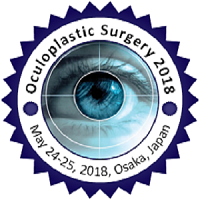
Tong Qiao
Director of ophthalmology ,Shanghai children's hospital affiliated to Jiaotong University
Title: Clinical features and surgical treatment of double elevator palsy
Biography
Biography: Tong Qiao
Abstract
Purpose: To describe the clinical features of congenital double elevator palsy (CDEP) and to evaluate different surgical outcomes based on improvements in the primary eye position and ocular motility.
Methods: Sixteen patients with congenital double elevator palsy in Shanghai Children's Hospital were enrolled from July 2014 to January 2017. Forced duction test ( FDT ) was negative in 15 cases. Twelve patients underwent standard Knapp procedure, with or without horizontal squint procedure; one patient underwent Hummelsheim procedure (part of the tendons capsule transposed); two patients underwent augmented Knapp procedure. And one patient had inferior rectus recession in affected eye and superior rectus recession in sound eye, because FDT was positive. Cure standard was defined as final vertical residual deviation ≤10 PD and ≥25% improvement in restriction after operation.
Results: 14 of 16 patients (87.5%) were aligned to with and within 10 prism diopters (PD), all of patients (100%) reached ≥25% improvement in restriction after operation. 5 patients from severe limitation (-3) to only slight limitation (-1) or normal, while improved in the other 11 patients from moderate limitation (-2) to only slight limitation (-1) or normal. One limited case of left “double elevator palsy” was found to have the right “double elevator palsy” as well after the surgery. One case exposed bilateral DVD with esotropia after the surgery. Three patients had binocular vision before and after surgery and none gained it after surgery. No significant surgery complications were observed during the follow-up periods.
TABLE 1. Summary of horizontal rectus muscle transposition procedures (Knapp procedure)
|
Procedure |
Number of cases |
Long- term average vertical correction(PD) |
Average Follow-up periods(months) |
|
standard Knapp |
12 |
20 |
28 |
|
augmented Knapp |
2 |
35 |
9 |
|
Hummelsheim Knapp |
1 |
12 |
31 |
Conclusions: Surgical procedures for CDEP must be individualized according to clinical evaluation and the results of FDT. The results of FDT is of vital importance to choose the appropriate surgical procedure. In addition, CDEP is also needed to early diagnosis and treatment to get the best outcome.

